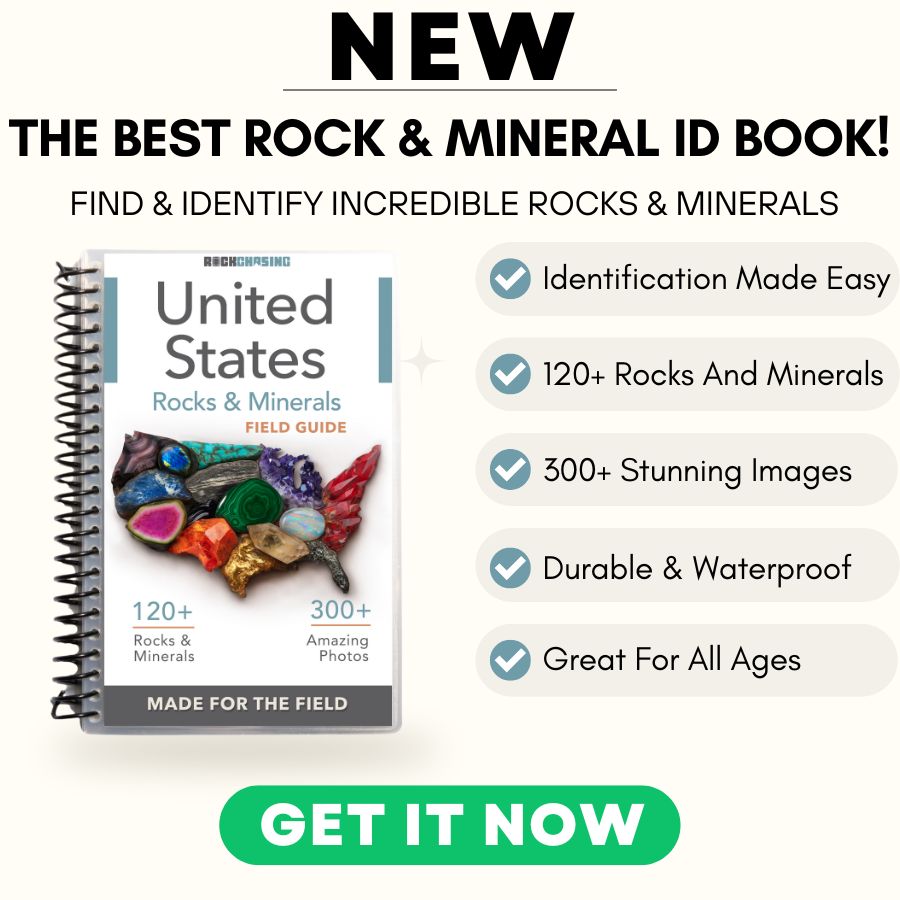Finding Rhodochrosite in Virginia can be tough when you don’t know where to start. Your back aches after hours of searching empty spots. The sun beats down as you stare at rocks that all look the same. Nothing feels worse than driving home with an empty bucket after a full day out.
The search gets easier when you learn the right places to look. Some areas in Virginia still hold plenty of this mineral, away from the usual crowded spots. Secret locations exist where others rarely think to check.
Getting good tips saves you from the heartbreak of wasted trips. The right knowledge turns frustrating hunts into exciting discoveries.
How Rhodochrosite Forms Here
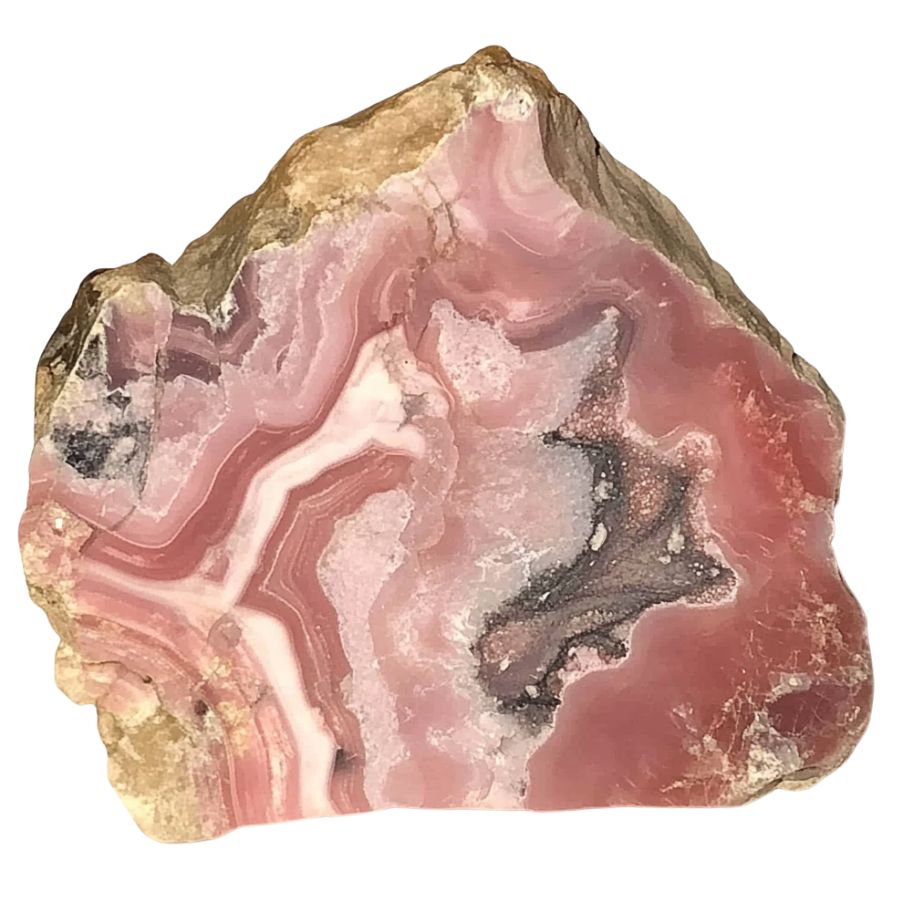
Rhodochrosite forms from manganese-rich waters seeping through cracks in rocks. When these mineral-heavy solutions mix with carbonate materials (like limestone), the magic happens!
Over time, as temperatures and pressures change deep underground, the manganese and carbonate ions come together and slowly crystallize. Sometimes, it forms in beautiful stalactites in empty spaces in rocks, while other times it shows up in hydrothermal veins alongside other minerals.
The most stunning specimens often form when the conditions are just right (not too hot, not too cold) letting the crystals grow slowly into those gorgeous pink rhombohedral shapes we love so much.
Types of Rhodochrosite
Rhodochrosite occurs in several distinct varieties. From delicate pink bands to deep crimson crystals, these variations showcase the diverse beauty of this remarkable mineral.
Pink Rhodochrosite
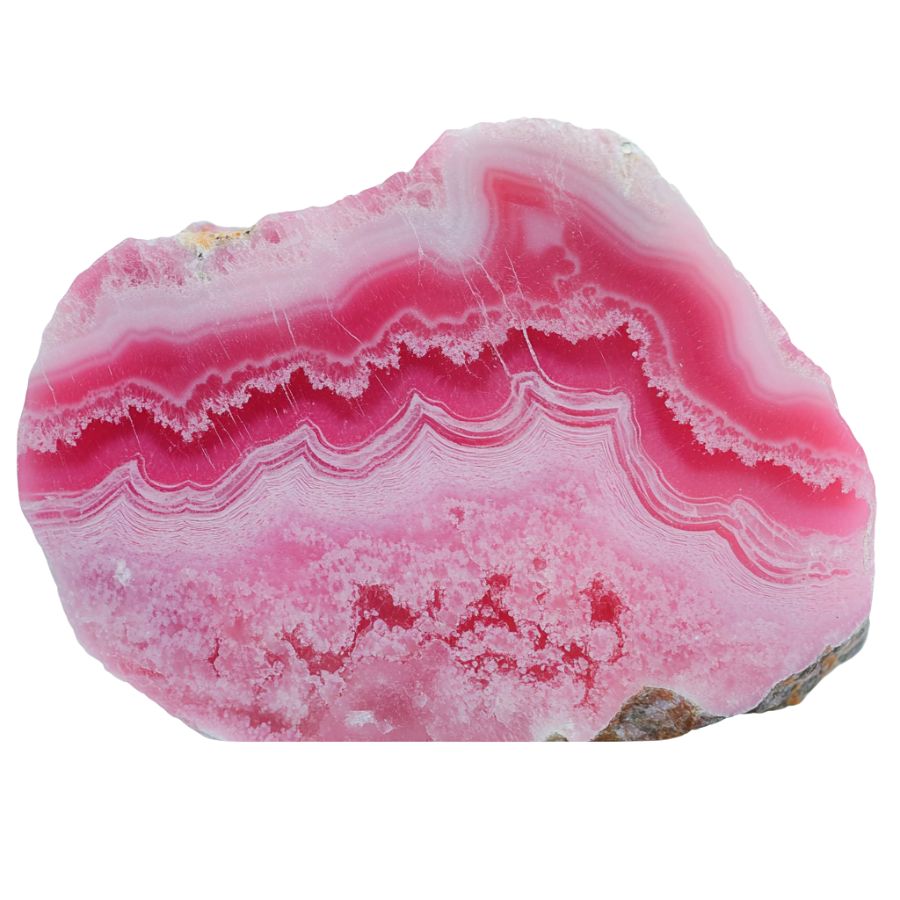
Pink Rhodochrosite displays delicate pink shades that range from soft pastel to deep rose pink. The stone features beautiful banding patterns that create swirling designs throughout its surface.
The translucent to semi-translucent nature of Pink Rhodochrosite adds to its visual appeal. This stone has a special trigonal crystal system that sometimes produces rare transparent crystals.
Fine specimens with clear, transparent crystals are particularly valuable. The best examples show sharp color zones and distinct banding patterns. Stone’s intricate patterns often resemble landscapes or abstract art.
Red Rhodochrosite
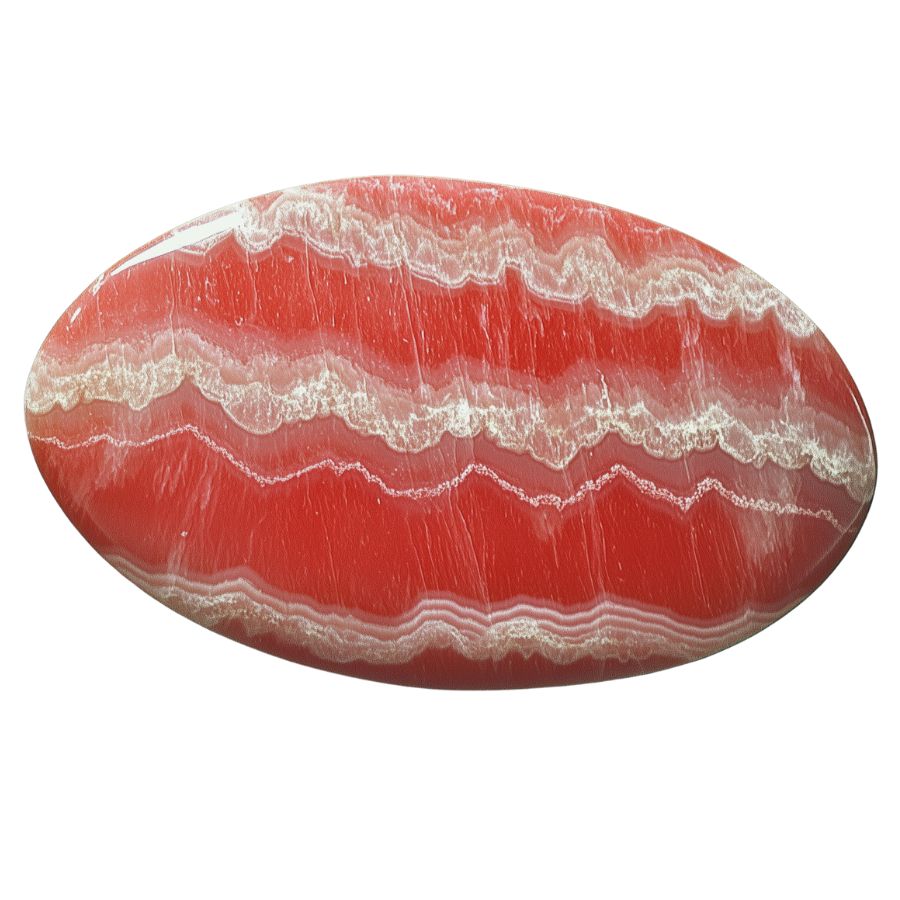
Red Rhodochrosite stands out with its bold, vibrant colors that range from bright red to deep crimson. Its intense red coloring comes from its high manganese content.
This variety can form in interesting shapes, including rhombohedral crystals and stalactite formations. When cut and polished, these formations reveal stunning internal patterns.
The crystal structure of Red Rhodochrosite allows it to form in large, well-defined specimens. These pieces often show sharp color transitions and clear crystal faces. The surface has a bright, glass-like shine when polished.
Some specimens feature dramatic color zoning, where deeper reds blend into lighter shades. This natural gradient effect makes each piece distinct and visually interesting.
Trapiche-like Rhodochrosite
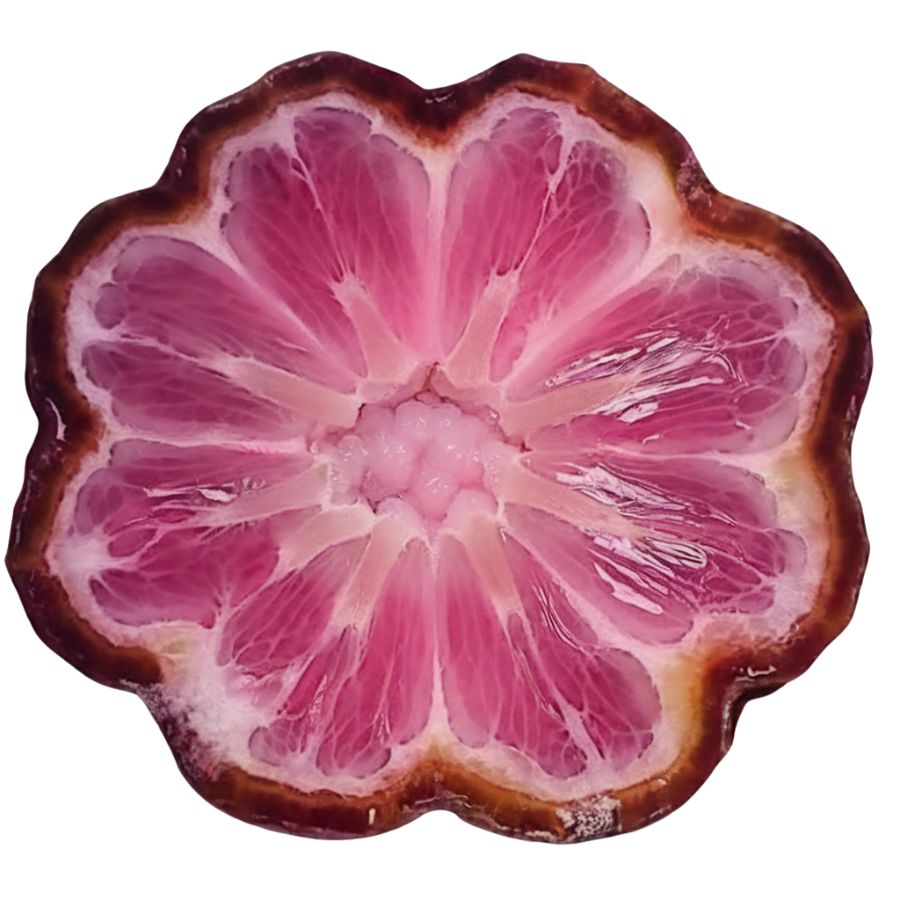
Trapiche-like Rhodochrosite showcases a remarkable star or flower-like pattern that makes it truly special. This pattern forms when crystals grow in a specific way, creating symmetrical rays that extend from the center. The result looks like a wheel with spokes or a blooming flower.
The formation process creates distinct sections within the crystal, each with its own character. These sections join at the center point, creating a natural geometric design.
When the stone is cut perpendicular to its main growth axis, its visual effect is enhanced. This orientation reveals the full beauty of the pattern and shows how the crystal sections fit together perfectly.
South African Rhodochrosite
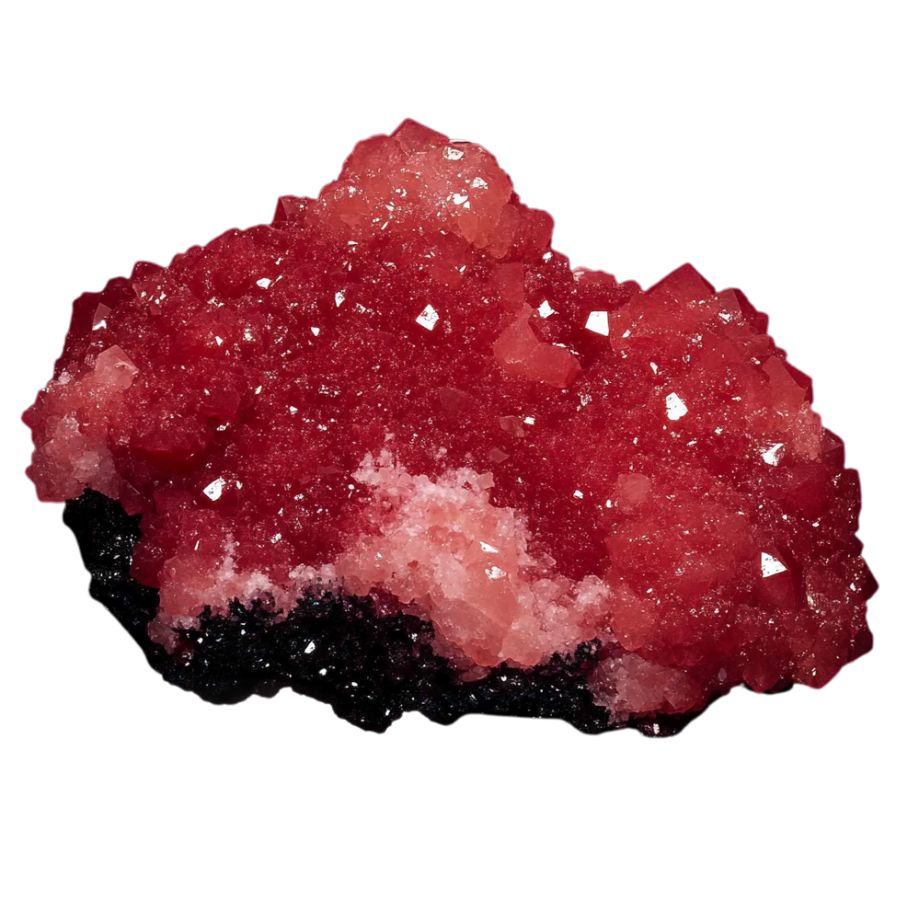
South African Rhodochrosite is known for its deep, rich blood-red color. This intense coloring sets it apart from other varieties. The stone often shows excellent clarity and depth of color which makes it particularly striking.
The internal structure of this variety creates interesting optical effects. When light passes through the stone, it can create a subtle glow that enhances its natural beauty. The crystal structure allows for excellent polish, bringing out the stone’s natural luster.
Many specimens show distinctive growth patterns that form during crystallization. These patterns can create interesting visual effects, from subtle color variations to dramatic geometric designs. The combination of deep color and natural patterning makes each piece unique.
Argentine Rhodochrosite
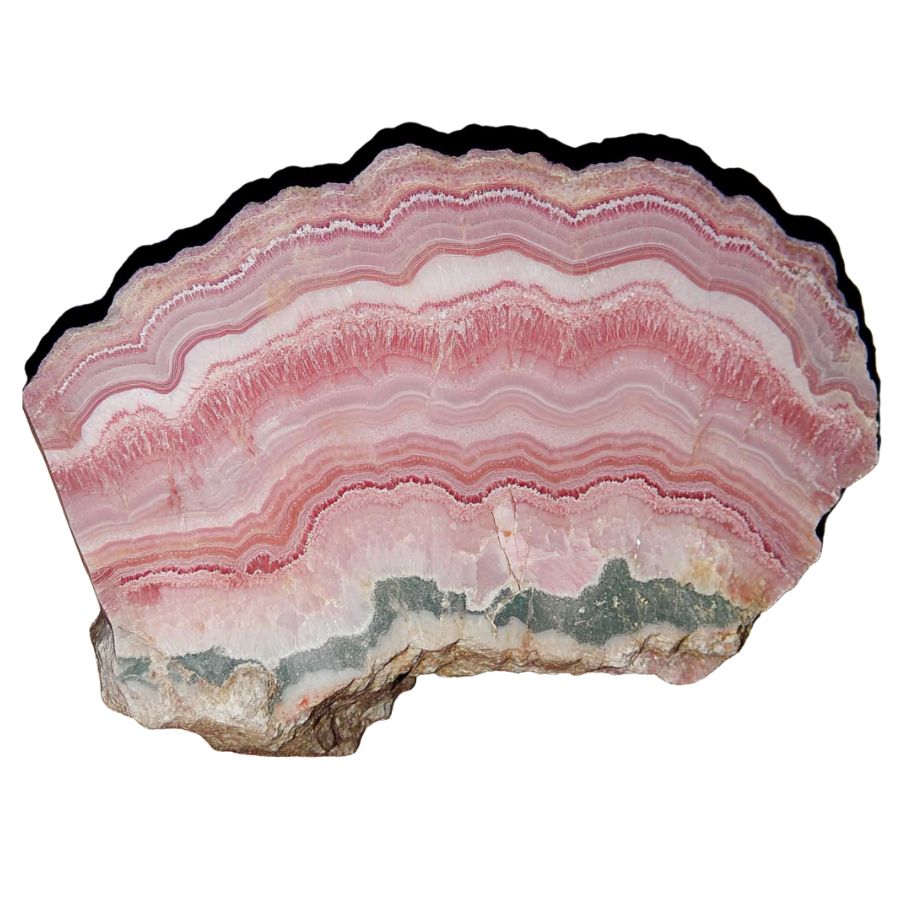
Natural bands of pink and white create stunning patterns across this remarkable stone. Delicate layering resembles fine marble artwork, making each piece unique. The colors shift between pale pink and deep red tones.
Historic significance adds to its charm as the “Inca Rose.” Ancient civilizations treasured these stones for their exceptional beauty. Many specimens show perfect crystal formations that catch and reflect light beautifully.
Exceptional purity sets Argentine specimens apart from others. Crystal formations often grow in perfect rhombohedral shapes. Traditional cutting methods reveal intricate internal patterns that collectors prize.
Colorado Red Rhodochrosite
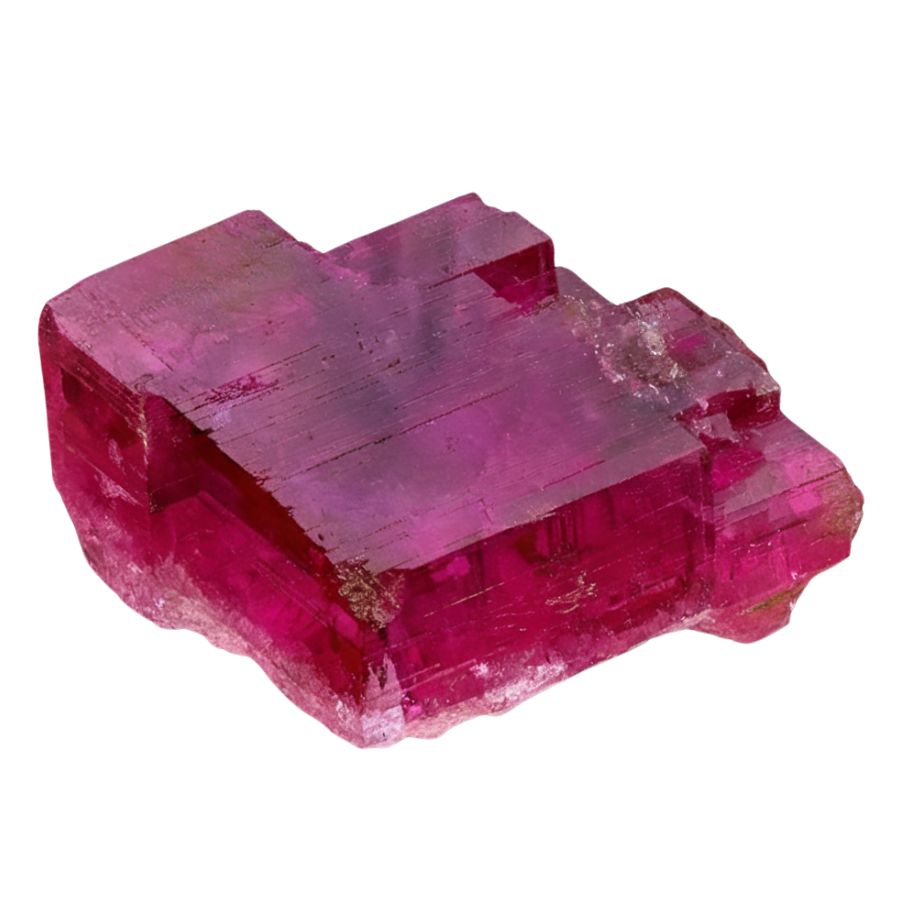
Brilliant rose-red colors distinguish this remarkable variety. Transparent specimens showcase exceptional clarity and fire. Natural light brings out deep crimson undertones that seem to glow from within.
Outstanding crystallization creates sharp, well-defined faces. Remarkable internal structures form during slow growth periods.
Superior brilliance makes these stones stand out in collections. Natural light reveals complex internal reflections. Fresh specimens maintain their vivid coloring over time. Special cutting techniques enhance the stone’s natural beauty.
Banded Rhodochrosite
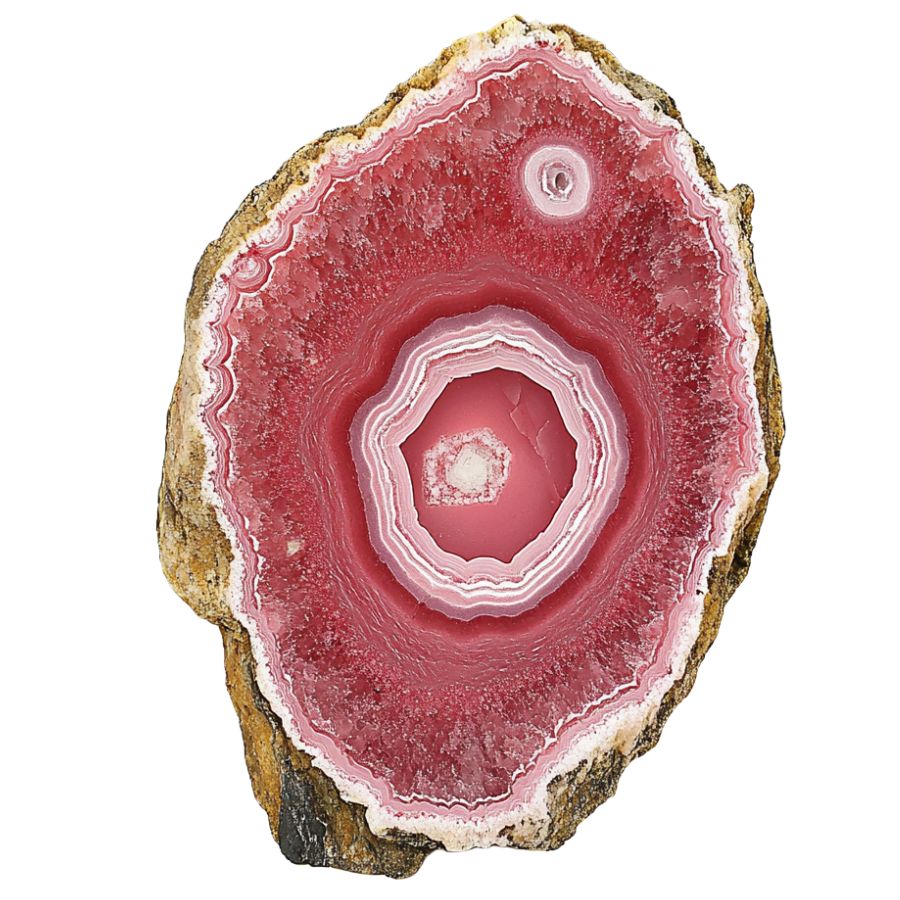
Concentric circles create fascinating patterns throughout this stone. Dramatic bands alternate between light and dark pink shades. Nature’s artistry reveals itself in each cross-section.
Perfect specimens form when mineral-rich water drips slowly over time. Natural processes create stalactite formations with distinct ring patterns.
Multiple layers build up over time to create unique patterns. Natural variation ensures no two pieces look exactly alike. Perfect cross-sections show complete circular patterns.
Peruvian Rhodochrosite

Peruvian Rhodochrosite exhibits a unique blend of pink tones with distinctive crystalline qualities. These stones often develop with exceptional clarity and a glass-like shine.
Crystal formation in these specimens tends to create angular patterns rather than rounded bands. This geometric growth pattern results in fascinating internal architectures that catch and reflect light in unique ways.
The combination of clarity and internal patterns makes these stones particularly fascinating under magnification. Collectors can observe minute details of crystal growth and formation that provide insights into the stone’s development process.
What Rough Rhodochrosite Look Like?
Rhodochrosite in its rough form can be tricky to spot, but once you know what to look for, it’s quite distinctive. Here’s how to recognize Rhodochrosite in its natural state.
Look for the Signature Pink-to-Red Color Range
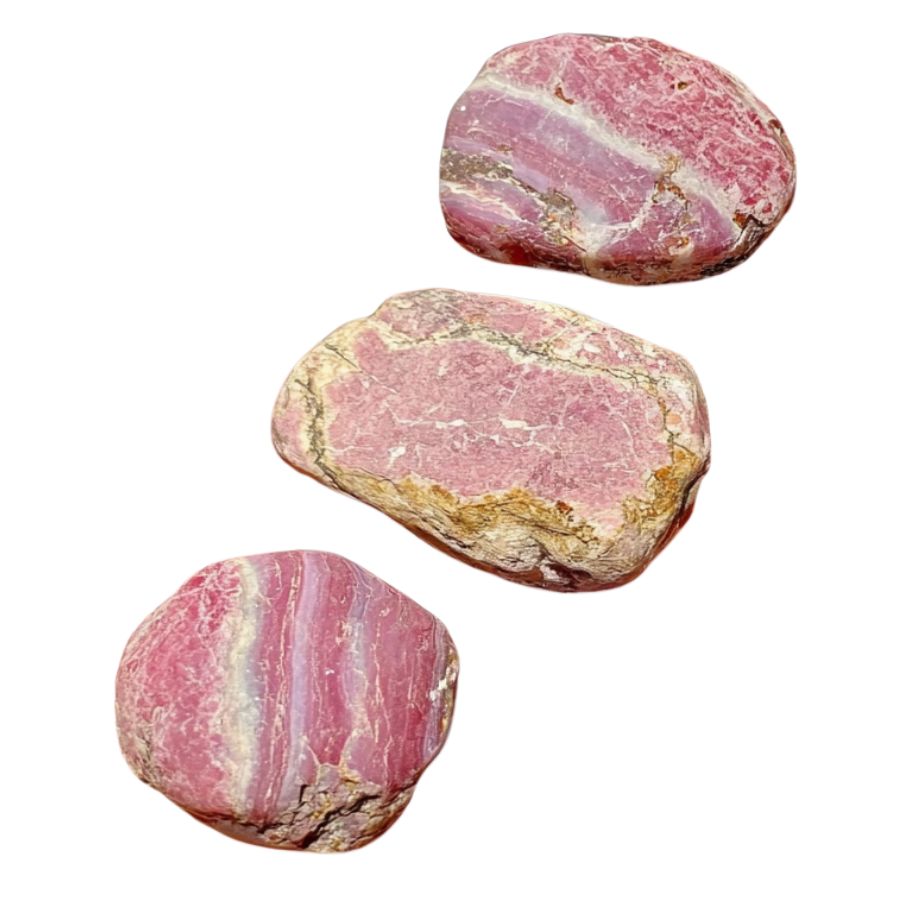
The most obvious telltale sign is its color – typically a warm, rosy pink to deep red. But here’s the thing: it’s not just one solid color. You’ll often spot subtle bands or zones of different pink shades.
Sometimes, you might see hints of brown or even light orange. Don’t dismiss it if it’s not perfectly pink – natural rhodochrosite can be surprisingly varied. The deeper, more saturated reds usually indicate higher-quality specimens.
Check for the Distinctive Crystal Structure

Unlike many minerals, rough rhodochrosite often forms in rhombohedral crystals. Look for angular edges and faces that meet at about 73 degrees. Sometimes you’ll find it in curved, saddle-shaped crystals (super unique!).
The crystals can be transparent to translucent, and they might appear in clusters or as individual specimens.
Examine the Surface Texture and Patterns
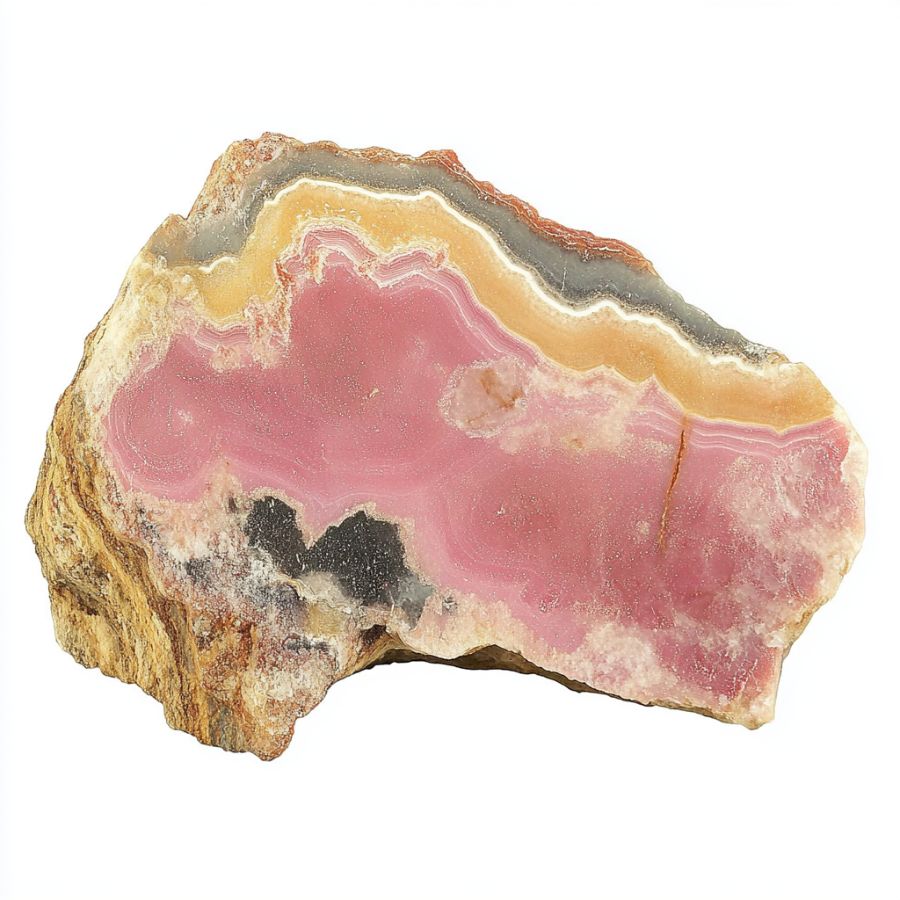
Run your fingers over the surface – rhodochrosite typically has a pearly to vitreous (glass-like) luster. Fresh breaks will show this best.
You might notice concentric banding patterns, especially in massive specimens. These bands often alternate between lighter and darker shades of pink. The surface might feel slightly smooth but not quite as glassy as quartz.
Test the Hardness and Fragility
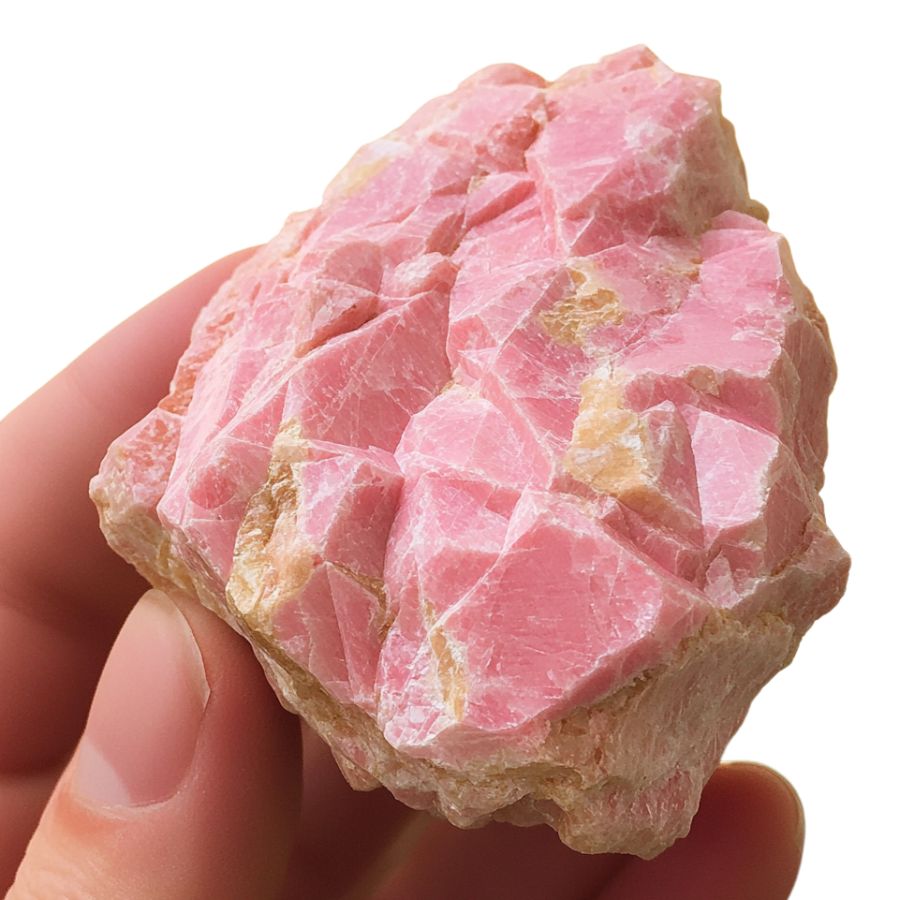
Here’s a crucial tip: rhodochrosite is relatively soft (3.5-4 on the Mohs scale). Try scratching it gently with a copper penny – if it scratches easily, you might have rhodochrosite.
Be gentle though! It’s pretty delicate and can break along cleavage planes. This softness and brittleness help distinguish it from similar-looking minerals like rose quartz, which is much harder.
A Quick Request About Collecting
Always Confirm Access and Collection Rules!
Before heading out to any of the locations on our list you need to confirm access requirements and collection rules for both public and private locations directly with the location. We haven’t personally verified every location and the access requirements and collection rules often change without notice.
Many of the locations we mention will not allow collecting but are still great places for those who love to find beautiful rocks and minerals in the wild without keeping them. We also can’t guarantee you will find anything in these locations since they are constantly changing.
Always get updated information directly from the source ahead of time to ensure responsible rockhounding. If you want even more current options it’s always a good idea to contact local rock and mineral clubs and groups
Tips on Where to Look
Rhodochrosite is a pink to rose-red mineral that often forms in veins and cavities. Here’s where you can typically find this beautiful stone while rockhounding in accessible locations across the US.
Abandoned Mine Areas

Old mines are great spots to find rhodochrosite. Check the mine dumps and tailings piles where miners discarded unwanted material. These areas often contain smaller pieces that weren’t commercially valuable but are perfect for collectors.
Look for pink-colored rocks in manganese-rich waste piles. The stone frequently appears alongside black manganese minerals, which can serve as a helpful indicator when searching.
Sometimes, you might get lucky and find specimens with beautiful banding patterns that were overlooked during mining operations.
Sedimentary Rock Formations
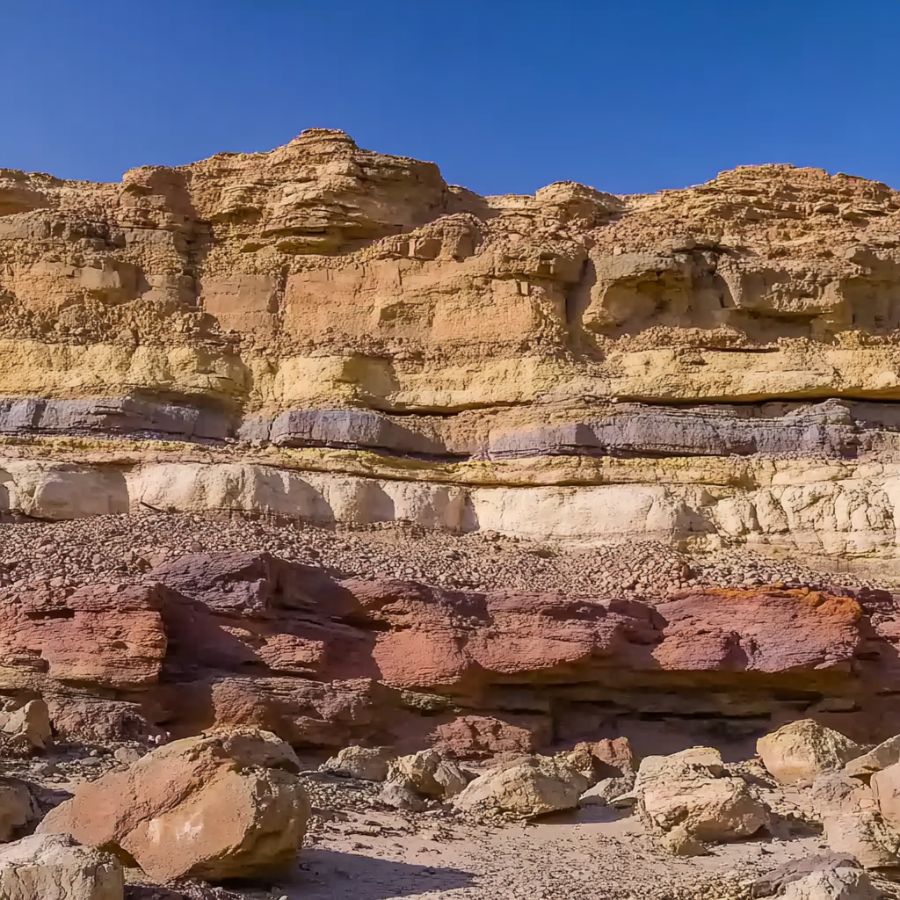
Many sedimentary rocks, especially those containing lots of manganese and calcium carbonate, can host rhodochrosite. Look for areas where limestone and dolomite are common. The stone often forms in the cracks and spaces between these rocks.
While exploring these formations, pay special attention to areas where water has carved out natural exposures, as these spots might reveal hidden rhodochrosite deposits that have been naturally weathered out over time.
Mountain Stream Beds

Stream beds in mountainous regions are excellent places to search. Focus on areas where the water has cut through manganese-rich rock formations, as the stream’s natural tumbling action often exposes and smooths rhodochrosite pieces.
During your search, concentrate on spots where the water slows down and creates natural collection points, such as behind large boulders or in quiet pools, because these areas tend to accumulate heavier minerals including rhodochrosite fragments that have broken free from their original source.
Some Great Places To Start
Here are some of the better places in the state to start looking for Rhodochrosite:
Always Confirm Access and Collection Rules!
Before heading out to any of the locations on our list you need to confirm access requirements and collection rules for both public and private locations directly with the location. We haven’t personally verified every location and the access requirements and collection rules often change without notice.
Many of the locations we mention will not allow collecting but are still great places for those who love to find beautiful rocks and minerals in the wild without keeping them. We also can’t guarantee you will find anything in these locations since they are constantly changing.
Always get updated information directly from the source ahead of time to ensure responsible rockhounding. If you want even more current options it’s always a good idea to contact local rock and mineral clubs and groups
Mecklenburg Area

Mecklenburg Area is in the southern part of Virginia, next to North Carolina. This place has hills, forests, lakes, and rivers. The land here has special rocks like schist, gneiss, and granite.
The best place to find rhodochrosite here is the Taylor Prospect near Clarksville. This pink mineral is found in the Hamme Tungsten District, where there are several old mines. You can often find rhodochrosite with other minerals like fluorite and scheelite.
People once used rocks from this area to build things near Rocky Mill. The soil here comes from these old rocks and isn’t very good for farming.
If you want to find rhodochrosite, look at the Walker 2 vein in the mining district. This pink mineral shows up more often there than in other places. Rock collectors come to this area to search for these special minerals.
Buck Hill
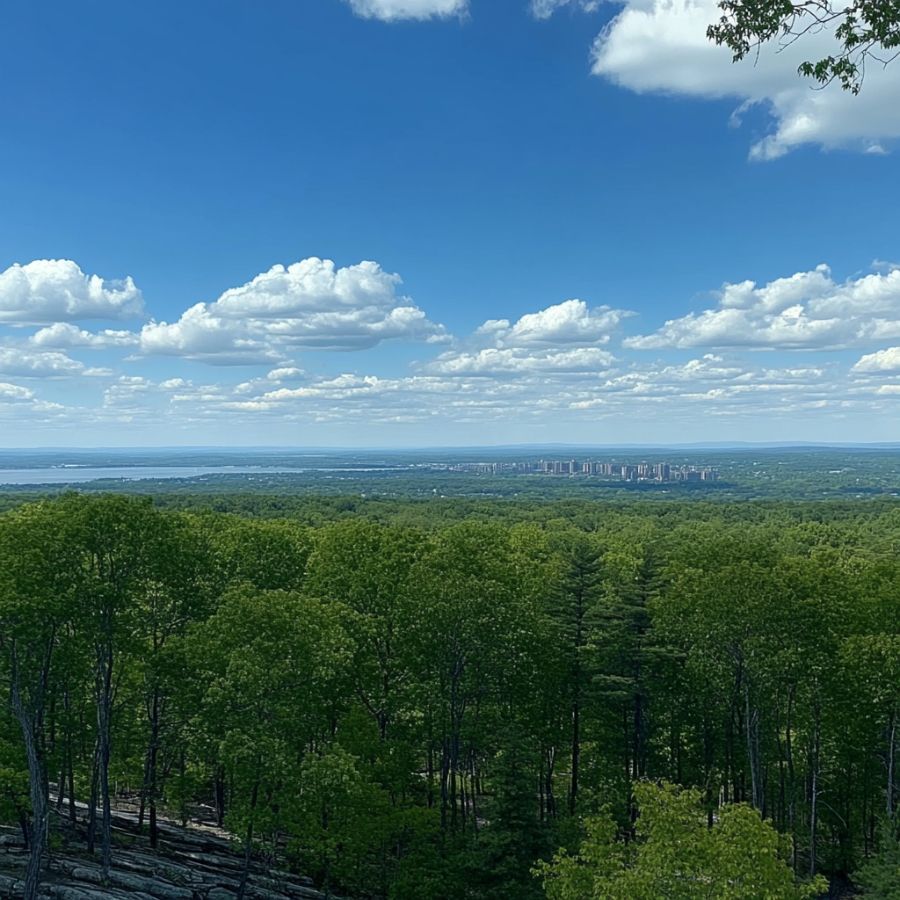
Buck Hill is about 4 miles from Parnassus in Augusta County. It sits near George Washington National Forest and many rock collectors visit this ridge. The hill has special rocks called syenite.
Over many years, the rocks here changed in ways that helped rhodochrosite form. This rose-red mineral is found among other crystals that Buck Hill is known for. These minerals tell us how this land formed over a very long time.
The best places to look for rhodochrosite are on the south and southwest sides of the hill. Rain and wind have washed away dirt to show the mineral-rich rocks underneath.
Old dig sites and natural rock outcrops give you the best chance to find this pink mineral. People visit Buck Hill not just for rhodochrosite but to see all the different minerals there.
Carroll Area
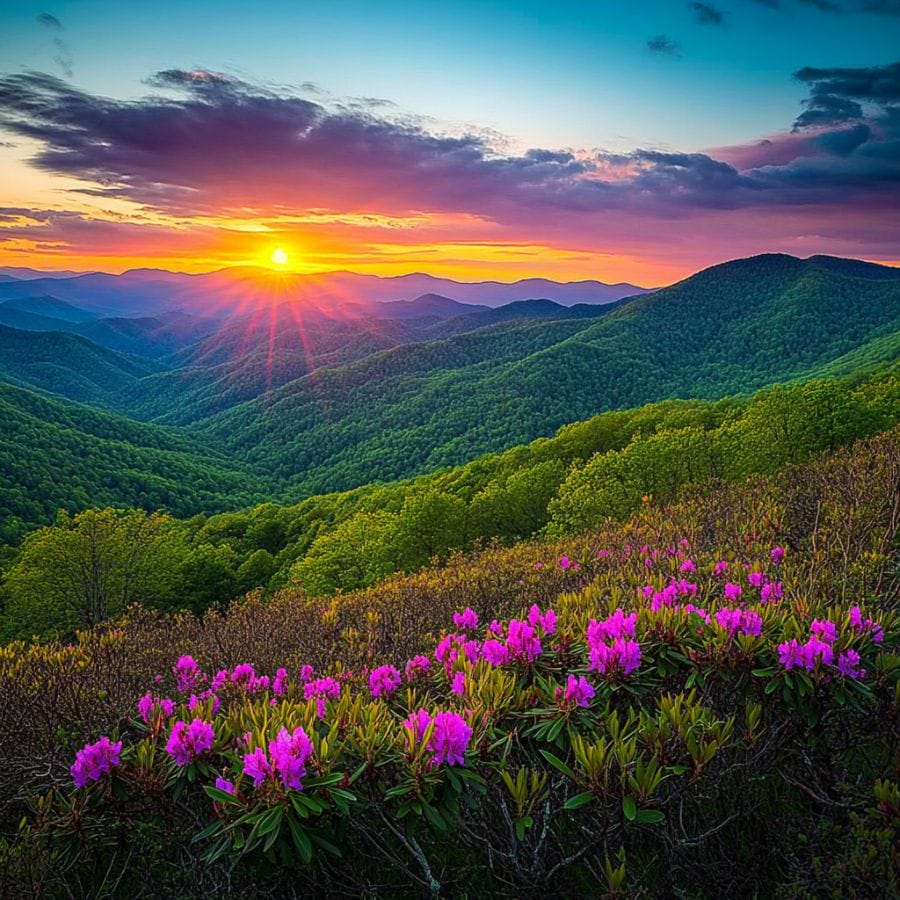
Carroll Area is in southwest Virginia with hills and parts of the Blue Ridge Mountains. The main town, Hillsville, has events that bring many visitors. This area was formed in 1842 and has strong Appalachian roots.
The most important feature here is the Gossan Lead, a 17-mile line of special mineral deposits. These deposits have turned reddish or yellowish-brown from years of rain and weather. This creates good spots for rhodochrosite to form.
Two places are best for finding rhodochrosite: the Betty Baker Mine (also called Paint Bank Mine) and the Gossan Howard Mine near Galax. Both spots have a history of finding minerals.
The rusty, weathered zones of the Gossan Lead are where you should look. While searching, you might also find other cool minerals like apatite and chalcopyrite.
James River

James River flows 348 miles across Virginia, starting in the Allegheny Mountains and emptying into Chesapeake Bay. The river cuts through the Blue Ridge Mountains and Piedmont region, creating diverse geological areas along its path.
Near Richmond, it forms rapids and waterfalls in an area called the Fall Zone, where hard Piedmont rocks meet softer Coastal Plain sediments.
Rhodochrosite hunters should focus on the James River-Roanoke River manganese-iron-barium mining district. The Hutter Mine (also known as Herter Magnetite Mine) in Pittsylvania County has documented rhodochrosite findings.
The river’s geology helped shape Virginia’s history too. The Fall Zone provided water power for mills and helped Richmond grow as a city. Besides rhodochrosite, you might find magnetite, hematite, and various manganese oxides while exploring.
Tye River
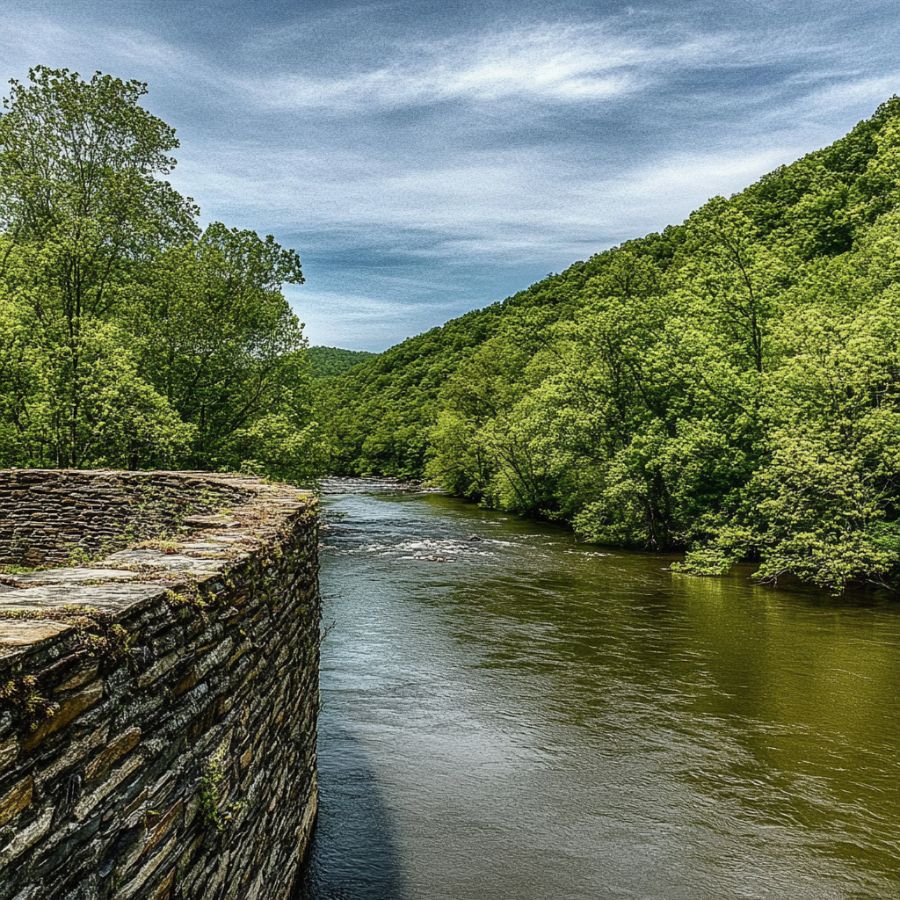
Tye River begins where two smaller rivers meet near Nash village on the Blue Ridge Mountains. This 35-mile river flows until it joins the James River near Norwood. The river runs through some very old rocks, some over a billion years old.
Nelson County, where the Tye flows, gave its name to nelsonite, which became Virginia’s state rock in 2016. The Piney River area nearby once had mines for titanium minerals.
To find rhodochrosite, check the old manganese mines near the river. The Tye River isn’t just for rock hunting. People also come for fishing and boating on its rapids. This makes it a fun place for both rock collectors and outdoor fans.
Places Rhodochrosite has been found by County
After discussing our top picks, we wanted to discuss the other places on our list. Below is a list of the additional locations along with a breakdown of each place by county.
| County | Location |
| Nelson | American Rutile Quarry |
| Nelson | Allen Copper Mine |
| Nelson | Bryant Farm |
| Amelia | Morefield Gem Mine |
| Rockbridge | Little Mary’s Creek |
| Prince William | Greenwood Gold Mine |
| Buckingham | Willis Mountain Kyanite Mine |
| Wise | Wise County Mines |
| Rockingham | Shenandoah Valley |
| Campbell | Mt. Athos Quarry |
| Prince Edward | Scufflin Acres Prospect |
| Carroll | Laurel Fork |
| Patrick | Stuart |
| Albemarle | Briar Fork |
| Nelson | Bryant |
| Nelson | Piney River |
| Nelson | Roseland |
| Nelson | Schuyler |


